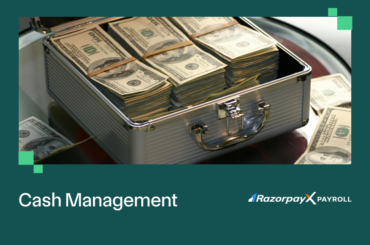Sections 206AB and 206CCA of Income Tax Act 1961 are introduced in Finance Bill, 2021 to ensure compliance with ITR filing.
Read on to understand the applicability and scope of sections 206AB & 206CCA that have come into effect from 1st July 2021.
Table of Contents
Sections 206AB and 206CCA – Income Tax Act 1961
Sections 206AB and 206CCA mandate tax deduction or collection at a higher rate if a ‘specified person’ has failed to file income tax returns for the previous two financial years. While Section 206AB deals with TDS (tax deducted at source), 206CCA is applicable for TCS (tax collected at source) at a higher rate.
In both the sections, if a person satisfies the following two conditions, then he/ she is regarded as a ‘specified person’ –
- He/She has not filed the income tax returns for the previous two financial years preceding the year in which TDS or TCS is required to be deducted or collected. For example, previous years for the financial year 2021-22 would be 2018-19 and 2019-20.
- The total TDS or TCS is more than Rs. 50,000 in each of the previous two financial years
Higher rate of tax deduction under sections 206AB and 206CCA
If sections 206AB and 206CCA are applicable to a tax-payer, the rate of TDS or TCS will be twice the original rate or 5%, whichever is higher. Also, if the ‘specified person’ fails to furnish PAN, then TDS will be deducted at the rate of 20%.
Applicability of sections 206AB and 206CCA
Sections 206AB and 206CCA are applicable on all nature of payments except –
- TDS on lottery payments (194B)
- TDS on provident fund withdrawals (192A)
- TDS on salary payments(192)
- TDS Income of investment securitization (194LBC)
- TDS on horse races winnings (194BB)
- TDS on cash withdrawal (194N)
Compliance check for sections 206AB and 206CCA
On average, businesses have to make hundreds of TDS payments. And, it’s practically impossible to manually check if the deductee or collectee is a defaulter of Section 206AB & 206CCA for every TDS/TCS payment.
To solve this challenge, an online ‘compliance check functionality’ for sections 206AB and 206CCA has been launched on the Income Tax Portal to help deductors or collectors identify the ‘specified person.’
How does the compliance check facility on the income tax portal work
As businesses & individuals, you can type in the PAN of the deductees/collectees on the portal, and a response sheet is generated that shows whether the deductee/collectee is a ‘specified person’ or not.
There are two types of search options available on the portal –
1. Single PAN Search, where you can check and verify only a single PAN, and
2. Bulk Search, where you can search Multiple PANs in one go. All you need to do is upload all the PAN numbers in a CSV file. After this, an output CSV file will be generated containing the list of all the ‘specified persons’.
When is the list prepared for Section 206AB and 206CCA
The income tax authorities prepare a comprehensive list of specified persons at the start of the financial year. The list contains details of ‘specified persons’ who have not filed their income tax returns for the previous two financial years and have a total TDS & TCS of Rs 50,000 or more in each of these two financial years.
Note: New entries of ‘specified persons’ are not added during the financial year. However, a ‘specified person’ can be removed from the list in any one of the following cases:
- If ‘specified person’ files a valid return of income (filed & verified) for any of the previous two financial years
- If the total TDS and TCS deducted and collected from a ‘specified person’ in any previous two years is less than Rs. 50,000
- If revised TCS/ TDS returns pertaining to the two previous financial years are filed during the current financial year
Example to understand the applicability of Section 206AB & 206CCA
Let’s say a company, Sapna Pvt. Ltd. (deductor) pays shop rent of Rs 50 lakh per month to Mr Arun (deductee). And, Mr Arun (deductee) has not filed income tax returns for the last two financial years – 2018-19 & 2019-20.
In this case, Mr Arun is a ‘specified person’ and the TDS rate will be:
(a) Twice the original rate: 2 X 10% (TDS for rent payments is deductible at 10%) = 20%, or
(b) 5%
whichever is higher.
Hence, Sapna Pvt. Ltd. is liable to deduct TDS @ 20%.
Make hassle-free TDS Payments
Make your monthly TDS payments in 30 seconds and in under 3 steps, completely FREE on our new TDS Payment tool.
– No sign-up required
– Completely free
– Trusted by top Indian CAs
– 100% secure payments





